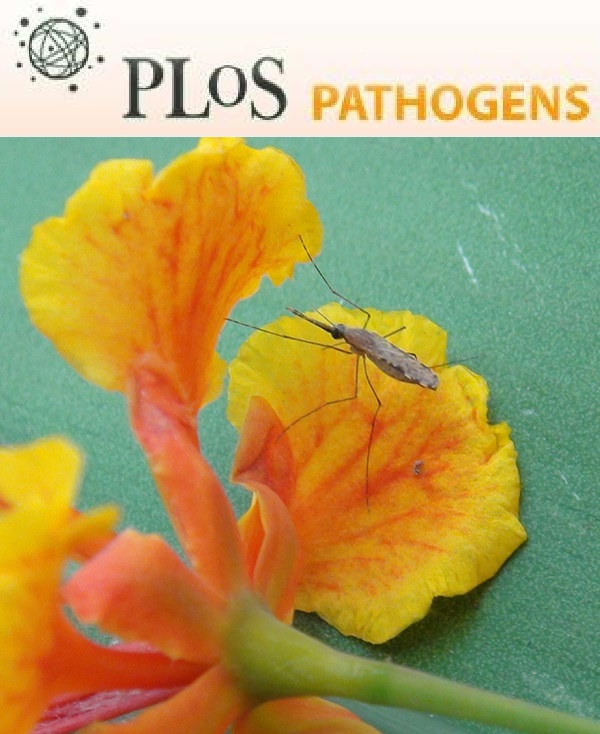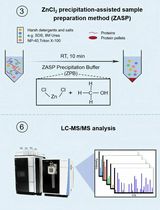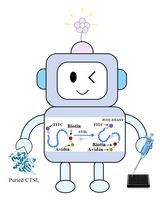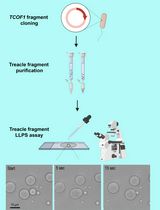- EN - English
- CN - 中文
Small-scale Triton X-114 Extraction of Hydrophobic Proteins
Triton X-114法小规模提取疏水性蛋白
发布: 2014年06月05日第4卷第11期 DOI: 10.21769/BioProtoc.1139 浏览次数: 18397
评审: Fanglian He
Abstract
Here we introduce a protocol for Triton X-114 extraction which we used in our recently-published paper (Taguchi et al., 2013). It is a versatile method to concentrate or partially purify hydrophobic proteins. The presented protocol is based on the protocol published by Bordier (Bordier, 1981) but more simplified and down-scaled for more small-scale and simpler use (Taguchi et al., 2013).
Triton X-114 (TX114) is a non-ionic detergent which has a relatively low clouding point at 22 °C and separates into detergent (Det) and aqueous (Aq) phase at temperatures above the clouding point. During phase separation, hydrophobic solutes in the TX114 solution are sequestered to the Det phase, while hydrophilic solutes are sequestered to the Aq phase. Utilizing this phenomenon, TX114 extraction is a very versatile technique to efficiently concentrate hydrophobic proteins, especially glycosylphosphatidylinositol (GPI)-anchored proteins like the prion protein (PrP), because they have substantial amounts of highly hydrophobic moieties. Besides, phase separation using TX114 tolerates a variety of conditions, e.g. different pH or relatively low concentrations of guanidine hydrochloride. Since the hydrophobic proteins are sequestered to the Det phase as long as the phase separation occurs, and if the hydrophobicity of the protein of interest is not affected by pH or denaturant, this technique can be also utilized to change buffers or to remove denaturants. When using enzymes or proteases which maintain activities in detergent solutions, TX114 can also be used to separate hydrophobic from the water-soluble hydrophilic moieties upon enzymatic digestion of proteins, as done by us using in vitro digestion of PrP with phosphatidylinositol-specific phospholipase C (Taguchi et al., 2013).
Materials and Reagents
- Neuro2a cells (N2a) (100%-confluent on a well of a 6-well plate)
- Triton X-114 (Sigma-Aldrich, catalog number: X 114-100 ML )
- 10x phosphate-buffered saline (Sigma-Aldrich, catalog number: P5493-1L )
- Complete protease-inhibitor cocktail (Roche Diagnostics, catalog number: 04693116001 )
Note: Optional, depending on the kind of the protein of interest and the purpose of experiments.
- 0.5 M EDTA (Millipore, catalog number: 324503-1KG )
- Deoxycholic acid (Sigma-Aldrich, catalog number: D2510-100G )
- Triton X-100 (Sigma-Aldrich, catalog number: T8787-100 ML )
- Sodiumdodecyl sulfate (Sigma-Aldrich, catalog number: L6026-50G )
- Glycerol (Sigma-Aldrich, catalog number: G9012-500ML )
- Purified water
- Phosphate-buffered saline without calcium and magnesium (Ca/Mg) (Life Technologies, catalog number: 10010-023 )
- Phosphate-buffered 0.5% Triton X-100 (TX100)/0.5% deoxycholate (DOC) lysis buffer (see Recipes)
- 5x sample buffer (see Recipes)
Equipment
- Refrigerated centrifuge (max rcf 16,100 x g) (Eppendorf, model: 5415R )
- Non-refrigerated centrifuge (max rcf 21,130 x g) (Eppendorf, model: 5424 )
- 50 ml conical tube
- 6-well plate
- 1.5 ml plastic tube
Procedure
文章信息
版权信息
© 2014 The Authors; exclusive licensee Bio-protocol LLC.
如何引用
Readers should cite both the Bio-protocol article and the original research article where this protocol was used:
- Taguchi, Y. and Schätzl, H. M. (2014). Small-scale Triton X-114 Extraction of Hydrophobic Proteins. Bio-protocol 4(11): e1139. DOI: 10.21769/BioProtoc.1139.
- Taguchi, Y., Mistica, A. M., Kitamoto, T. and Schätzl, H. M. (2013). Critical significance of the region between Helix 1 and 2 for efficient dominant-negative inhibition by conversion-incompetent prion protein. PLoS Pathog 9(6): e1003466.
分类
生物化学 > 蛋白质 > 分离和纯化
您对这篇实验方法有问题吗?
在此处发布您的问题,我们将邀请本文作者来回答。同时,我们会将您的问题发布到Bio-protocol Exchange,以便寻求社区成员的帮助。
Share
Bluesky
X
Copy link













